Greg Niven, Necsel IP Inc.
Demand for high-quality video display keeps growing, both from consumers and the creative industry looking to push moviemaking boundaries and maximize the cinematic experience.
We’ve grown accustomed to excellent images. Whether you’re watching your favorite show on an HDTV or just playing videos on your smartphone, the pictures are crisper and brighter than ever before. But projecting onto the big screen presents unique challenges. Nowhere is this more evident than in the 3D movie industry. In recent years “take rates” in the U.S. are down, meaning consumers more often opt to see the lower cost 2D version of a film. Key problems are that the 3D images aren’t bright enough, so viewers aren’t able to fully discern the image, leaving them disenchanted by unnatural-looking colors and poor contrast.
Powerhouse cinema and projector companies, such as Dolby, Christie, Barco and IMAX, as well as entertainment giant Disney, have turned to laser technology to change the 3D viewing experience. Using laser projectors they’re able to produce dramatically brighter images with a wider color gamut and a higher contrast ratio. Another key laser value driver is a lower cost of ownership, including increased lifetime over traditional projector bulbs. Laser projectors are already being installed in the world’s most advanced cinemas and theme parks, redefining what’s possible with premium cinema.
Light in the cinema world
The projector industry evaluates light and light sources differently than is typical for conventional laser applications. Key terms and concepts used in projector design relate to perception by the human eye, including photometric vs. radiometric. Radiometric quantities refer to absolute physical powers of the light and are the units that most physics and optics specialists use. This is in contrast to photometric units, which take into account the light’s interaction with the human eye, or its perceived brightness. The radiometric unit for the power of light is watts; the photometric equivalent is lumens.
The photopic response of the human eye is illustrated in Figure 1, showing relative intensity. The eye cannot see wavelengths shorter than around 400 nm (violet) or longer than around 700 nm (red). It is most sensitive at 555 nm (green), where 683 lm/W are produced. Cinema projectors are classified by how many lumens are produced based on the watts of power consumed.
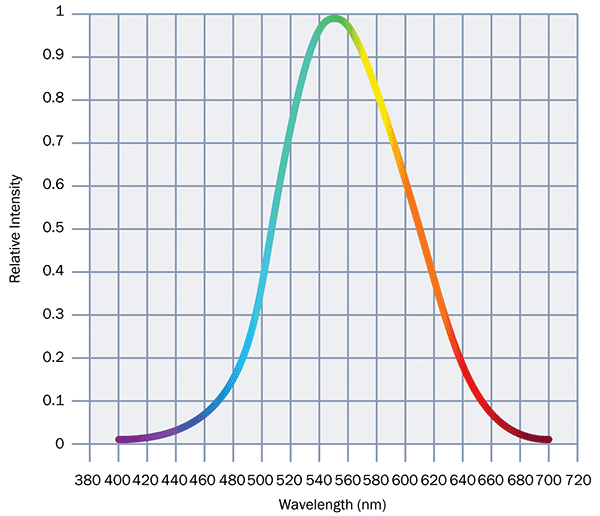
Figure 1. This graph demonstrates the photopic response of the human eye. Photo courtesy of Necsel.
The brightness of a light source inside a projector is not only the amount of watts or lumens. It also requires a directional and area element because the light is being collected by optics. The radiometric unit is radiance (watt per square meter per steradian, or W/m2/sr); the photometric equivalent is luminance (lumens per square meter per steradian, or lm/m2/sr).
Note that the denominator portion of both of these is the m2/sr, which is commonly called the étendue — a characterization of how spread out an optical system is in both area and angle. This étendue value can apply either to the light source of the projector or the ability of the projector engine to collect the light. For example, for laser cinema projectors, the étendue is controlled by the f/# and size of the micro displays inside the projector.
Dolby Laboratories Inc. is an early adopter of laser technology for cinema with its Dolby Vision laser projection system for Dolby Cinema, codeveloped with Christie Digital Systems USA Inc.
“As lamps get larger, it is harder to efficiently capture their output into the small area required by the micro displays.
Lasers inherently have their output focused into a smaller area, so it’s easier to get more light to the small displays used to project the images,” said Stuart Bowling, director of Content and Creative Relations at Dolby. “The low étendue of the lasers means more light enters the system allowing for reproduction of brighter images on larger screens.”
Beyond light characteristics, projector and entertainment companies are also concerned with cost of ownership issues, such as typical lifetime of the sources, simplicity of laser replacement and energy consumption.
How is 3D made?
The human brain perceives depth with two eyes that are separated, generating two unique perspectives. The brain combines the respective images, which creates a sensation of depth. For a cinema projector to produce the illusion of depth on a flat movie screen, it must also generate two unique images: one for each of the viewer’s eyes. Viewers wear 3D glasses to separate the images.
There are two techniques used for separating the images: polarization and six-primary (6P) color. Polarization 3D uses two polarization states (such as linear vertical and linear horizontal) to separate the images. However, if you do not image onto a polarization-maintaining surface or even if you tilt your head, the 3D effect fails.
Dolby commercialized color-based 6P 3D, also known as color filtering, several years ago, and it is widely accepted as the highest quality 3D platform. In a typical implementation, a xenon lamp is used as a broad spectrum light source in the light engine. Color filters within the projector separate the white light into its red, green and blue (RGB) primaries, which form separate red, green and blue images on three microdisplays within the projector. A prism then recombines the images and sends them to the movie screen. In 6P 3D, either two projectors are used, as with the Dolby system, or a single projector is used, and two sets of images are interleaved.
Color-filtering glasses separate the images for each of the viewer’s eyes. In Figure 2, we see the sum of two sets of RGB primaries (R1R2, G1G2, B1B2) going into a set of glasses, but the light is filtered so that one eye sees R1G1B1, while the other eye sees R2G2B2. This implementation creates effective 3D, but the lamp-based method results in dim images on the big screen since much of the light is filtered out and discarded within the projector.
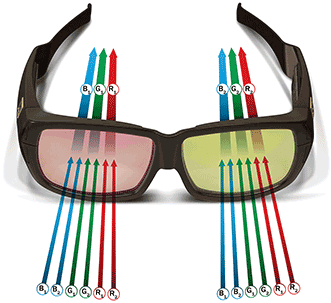
Figure 2. Six primary color 3D glasses. Photo courtesy of Christie.
Now projector companies are creating high-quality 3D with 6P laser projection. The technique relies on projecting two sets of RGB laser primaries, which are subsequently separated using the 3D glasses. However, unlike xenon lamps, lasers offer discrete spectral output, so color filtering within the projector is unnecessary. Instead, lasers with output tailored to the desired wavelengths are grouped together for high-brightness output that can be sent directly to the projector’s microdisplays. Dolby 3D with laser capability is now able to achieve full-brightness 3D content at 14-ft lamberts with incredible contrast.
Laser sources offer new advantages
Today’s laser-based projectors deliver the output of multiple laser devices using fiber optics to create a single, high-brightness beam of light in red, green or blue. Free-space delivery of the lasers’ light is another viable architecture. These sources are easily scalable, and offer the convenient redundancy of multiple lasers to ensure consistent performance.
Necsel supplies dual primary red, green and blue laser sources to premium cinema projector companies. The enabling technology is the two green primaries produced by the patented Necsel extended-cavity, frequency-doubled, surface-emitting laser array. Necsel RGB lasers have demonstrated lifetimes in excess of 10 years without replacement (typical lifetime for a high-power xenon projector lamp ranges around 500 to 800 hours) and are produced in high volumes, bringing price into alignment with market demands for premium large-format projection.
When comparing lamps to lasers in cinema projection, we look at the luminance and radiance of the sources. To evaluate a lamp source, we first look at how much light is collected by the optics (reflector and collector lenses) and then how much is filtered out to generate the 6P 3D. In today’s lamp-based commercial systems, at most, 10,000 lumens reach the screen after the extensive color filtering. The brightness of the laser source is much easier to determine. We know the total watts and use this to calculate the total lumens using the photopic response; some systems today generate over 50,000 lumens per eye.
Dolby Vision laser projection also allows for a wider color gamut.
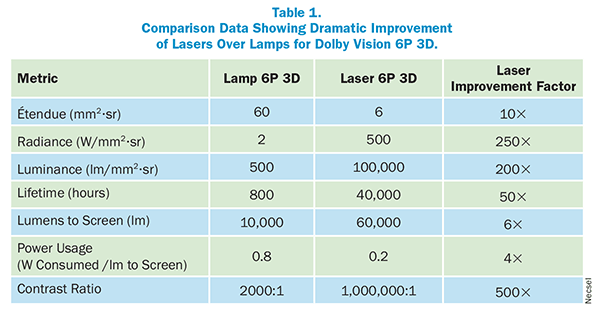
“Lamps are broad spectrum, so color filters are used to generate the red, green and blue primaries. Those filtered lamp primaries are used to generate all the colors reproduced on the screen. In order to remain efficient the filtered light is still broad spectrum compared to the laser light primaries, which limits the reproducible color gamut. Narrow band lasers provide the creatives a much larger color palette,” Bowling said.
Table 1 shows the dramatic performance improvement of a laser projector over a lamp projector. This illustration is typical of a Dolby 6P 3D installation, already in use at several venues around the world.
In theaters today
In the U.S., Dolby and AMC Theatres have partnered to launch Dolby Cinema at AMC Prime, featuring laser-based Dolby Vision projection systems. These are the most sophisticated theaters to date; Atlanta, Kansas City, Kan., Los Angeles and Houston are among the first cities to benefit. Also, Dolby Cinema has launched with JT Cinemas in Hilversum and Eindhoven in the Netherlands (Figure 3).
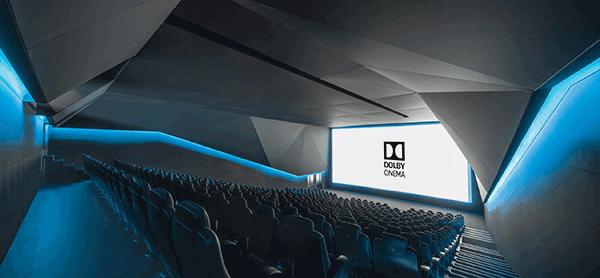
Figure 3. Interior of Dolby Cinema at JT Eindhoven in the Netherlands. Photo courtesy of Dolby.
“Dolby Vision needed to support outstanding 3D. Using six narrow-band laser primaries and eyewear with color filters, the Dolby 6P Laser 3D is hands down the best system available,” Bowling said. “All the laser light is used all the time with the duo projection head architecture allowing for 45 percent efficiency — 3D is 45 percent the brightness level of 2D using same system parameters; typical polarization-based systems are ~28 percent. The narrow bands allow for outstanding 1000:1 typical minimum stereo contrast from every seat in the house, which exceeds several times the performance of polarized 3D systems. In addition, the Dolby Vision projection system has been able to achieve a contrast ratio that exceeds 1,000,000:1.”
The new Dolby Vision 6P laser projectors (Figure 4), were developed in collaboration with Christie.
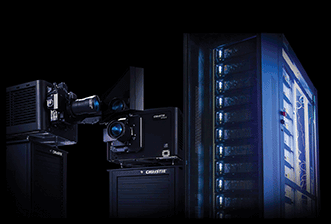
Figure 4. Christie 6P 3D laser projection system. Photo courtesy of Christie.
“The use of laser-illuminated projectors opens up a whole new world of possibilities for improving the cinema experience,” said Dr. Don Shaw, senior director of product management at Christie. “Christie believes that the most immediate benefits will be seen in Premium Large
Format theaters, starting with Dolby’s groundbreaking Dolby Vision theater effort, which depends on laser technology to deliver unprecedented brightness, wide color gamut, spectacular 3D performance, and high dynamic range at levels never before seen on the big screen.”
Over the past few years, IMAX has undertaken “the largest R&D investment in the company’s history to develop its next-generation projection and sound system featuring groundbreaking laser technology,” according to IMAX.com. Debuting in locations such as the famous TCL Chinese Theater in Hollywood, Calif., IMAX laser 3D projection is helping redefine the brand’s immersive experience by showing digital content with greater brightness, clarity and deeper blacks than ever before in an IMAX theater.
High-quality images along with reduced cost of ownership are among the reasons why Disney chose to retrofit its Soarin’ Over California ride (at California Adventure Park) with laser projection. The attraction allows Disney guests to experience “flying” over beautiful California landscapes via an immersive large-screen projection system and was initially introduced using traditional film and a lamp-based system when the park opened in 2001. The retrofit, installed this past spring, introduced digital projection from a laser-based system to dramatically enhance visual quality. In addition, the lasers’ long lifetime ensures more attraction uptime — critical in a park that entertains several million people per year.
Seeing is believing
Christie speculates that in time, thanks to the cost of ownership advantages offered by laser technology, even the cinema market’s value segment will begin to realize the increased performance that laser projection can bring to cinema audiences.
“Eventually, we see a top-down, bottom-up convergence that has laser projection overtaking lamp-based illumination technology in all segments of the cinema market. This will mean better, brighter, more colorful images at all movie theaters, which will ultimately help exhibitors deliver a shared cinema experience that is more immersive and spectacular than all other available choices for watching movies,” Shaw said.
Today, these leading entertainment companies are embedding laser projectors into the most immersive cinema venues in the world and viewers are getting a first taste of the enhanced brightness, true color and unmatched contrast that lasers bring to the experience. The best proof that lasers are revolutionizing premium cinema is simply to visit one.
Meet the author
Greg Niven is vice president of sales and marketing and a founder of Necsel; email: [email protected].